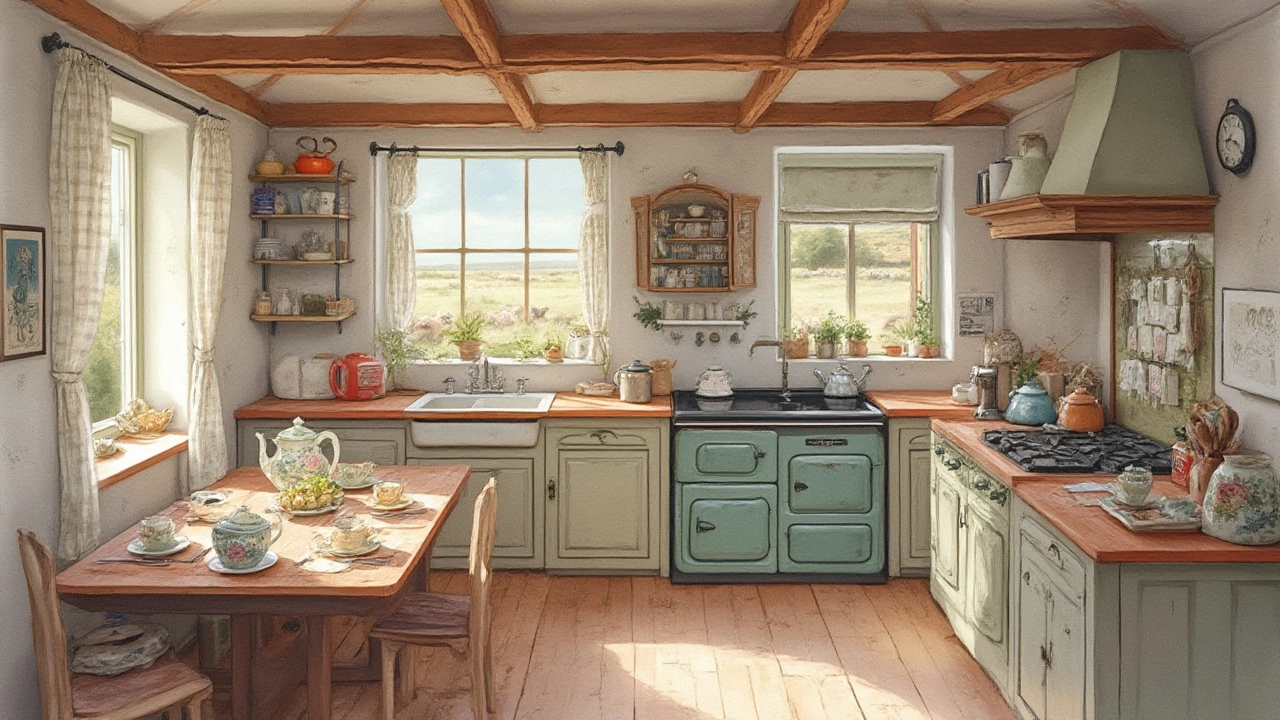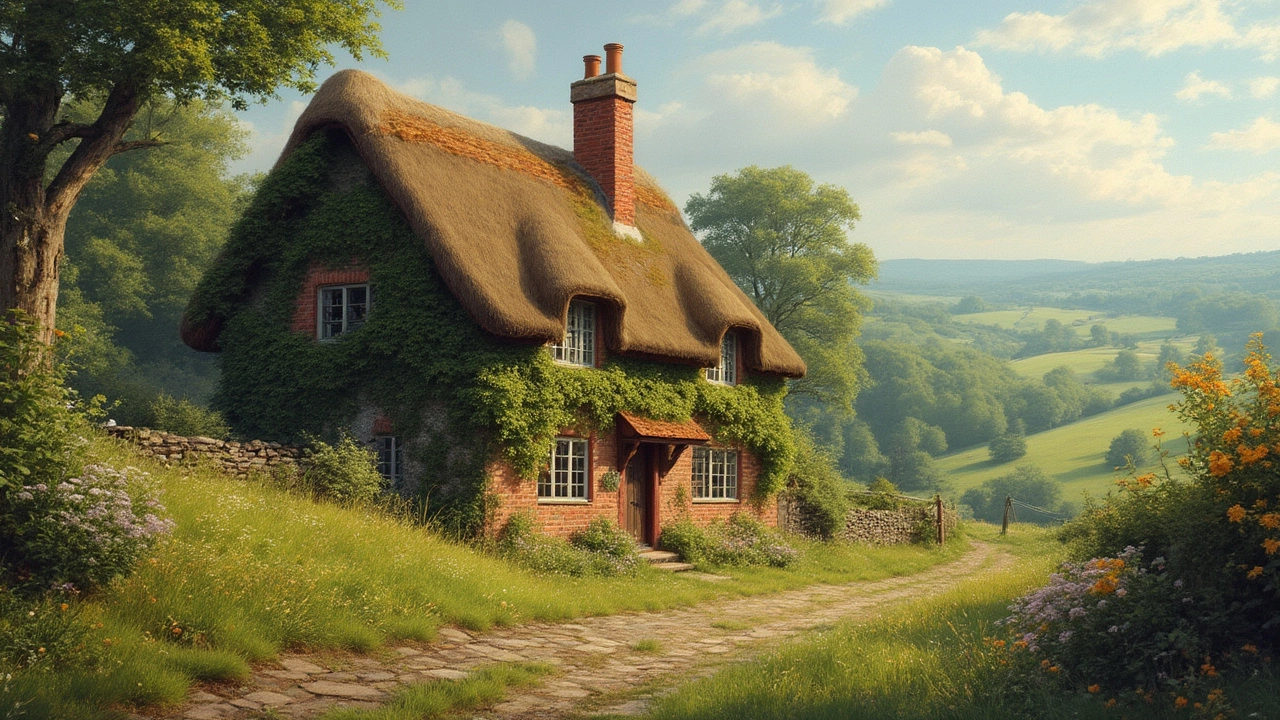Close your eyes and picture a house where the loudest noise at night is a sheep bleating or rain thumping on a tin roof. The walls don’t always line up straight, and you might spot bats fluttering in the evening sky. This isn’t a fantasy—it’s the reality of rural cottage life, a style of living that hasn’t faded, even in our tech-crazed age. In an era where high-rise apartments crowd city skylines and people order dinner with a swipe, the quiet simplicity and honest character of the rural cottage still tugs at our hearts. But what actually is a rural cottage, and why do people fall so hard for this country dream?
Defining the Rural Cottage: History, Styles, and Purpose
The rural cottage is rooted deep in the stories of ordinary folk. “Cottage” comes from “cotter” – a medieval worker who lived on a small parcel of land. You can spot the basic blueprint almost anywhere temperate and green: one or two stories, stone or timber walls, a roof steep enough to shrug off rain or snow, and a modest patch of earth to call your own. In the UK and Ireland, that patch might shelter a vegetable bed, a goose, or a row of roses. In New Zealand, rural cottages often perch on rolling hills, with woolly sheep grazing right up to the door.
Not all cottages are created equal. A Cornish stone cottage crouching in a misty field looks nothing like a Swedish red-and-white wooden stuga. Yet, through centuries, a few key themes stick: rural cottages sit in the countryside, apart from cities; they’re smaller than farmhouses, often built for workers or families living close to their land. The cottage’s charm lies in its humble, practical architecture. Instead of fancy moldings, think thick stone walls, a thatched or iron roof, and windows that frame wild, ever-changing views.
Rural cottages exploded in popularity during the 19th century, partly as a reaction to industrial city life. Writers and artists—think William Morris, Beatrix Potter, and even J.R.R. Tolkien—fell in love with the idea of living simply, surrounded by nature. They painted cottages as cozy, honest places compared to smoke-choked cities. That image stuck around. In fact, New Zealand’s post-war baches and Australian bush cottages riff on these same themes: independence, beauty, self-sufficiency.
| Country | Common Materials | Typical Features |
|---|---|---|
| New Zealand | Timber, iron, brick | Verandahs, open fireplaces, corrugated roofs |
| UK | Stone, mudbrick, slate | Thatch/slate roofs, deep-set windows, cottage gardens |
| Ireland | Stone, thatch, whitewash | Low ceilings, thick walls, open hearths |
| Canada | Wood, log, brick | Double glazing, large porches, rustic finishes |
The honest build and humble size isn’t just for show—it’s designed for survival. In gusty, rainy, or snowy regions, thick walls trap warmth and shrug off storms. Low ceilings help keep rooms cozy. Those small windows aren’t stingy; they conserve precious daylight and insulate against chill. Traditional cottages huddle near water or in sheltered valleys, relying on local material for both function and beauty. There’s nothing artificial or grand about a rural cottage, but that’s its greatest asset.
What Really Makes a Rural Cottage: Features, Space, and Day-to-Day Living
If you want to spot a real rural cottage—not just a pretty holiday rental with a posh hot tub—look for grit under the charm. These homes are practical to the core. A classic rural cottage might have two or three bedrooms, a kitchen that’s more like a working heart than a showpiece, and a living area doubling up as a place to mend boots or lay out homegrown veggies in winter.
Cottages, by their nature, run small. On average, an authentic rural cottage might clock in at 80 to 110 square meters—cozy, but not cramped if you learn to live simply. They often include a garden—sometimes wild and rangy, other times tightly pruned, stuffed with roses or scent-blasted lavender. The outbuildings tell their own stories: you might stumble on a tool shed stuffed with rusty spades, or an old-side barn sheltering chickens. New Zealand’s rural cottages sometimes host woodsheds or sleepouts, basic cabins for visitors or adventurous teenagers.
Inside a rural cottage, you’ll probably find:
- Low, beamed ceilings and rough plastered walls
- Old fireplaces or cast iron stoves—sometimes both
- Small, deeply set windows offering crops of sunlight
- Wooden or stone flooring, patched where needed
- Simple kitchens, often with open shelving and basic stoves
- Winding stairs—sometimes steep and narrow
- Furniture with history, rarely a full matching set
- Occasional creaks and drafts (charm, not flaw)
The pros of this arrangement? There’s a closeness to the land and the seasons you just can’t get in the suburbs. It’s common in rural cottages to wake with the sunrise because it streams in through the window you forgot to cover. Cooking means prepping whatever’s fresh from the patch or foraging in local hedges. A 2023 survey about rural homes in New Zealand found nearly 60% of rural cottage-dwellers kept a vegetable garden, and half reported foraging wild berries at least once a season.
But there are quirks to love—or to learn to live with. Electricity might flicker in storms. Heating is work; chopping wood is just part of winter prep. Instead of pizza delivery, you might drive 30 minutes to the nearest shop. Internet? Sometimes slow, sometimes amazing, depending on which side of the hill you’re on. Still, for many, these small hassles bake extra flavor into daily life. In fact, studies from rural Britain and New Zealand link cottage living with higher levels of reported wellbeing, thanks to fresh air, close ties with nature, and a slower pace.

Why Are Rural Cottages So Popular? The Psychology and Trends
What keeps people coming back to rural cottages, even when modern life is screaming for smart homes and open-plan spaces? Part of it is nostalgia: cottages remind us of old stories, safe hideouts in wild weather, or evenings spent around a fire. This craving only grows in times of stress. A good example is the global spike in cottagecore—yes, it’s a real thing—during 2020 and 2021. Social media feeds filled with sourdough bread, hand-knitted jumpers, and rustic kitchen tables. The quiet life suddenly looked like the dream.
A rural cottage also offers something else: a promise of privacy and peace. According to the New Zealand Real Estate Institute, searches for rural and country cottages grew 34% from 2019 to 2022. The biggest reasons buyers gave were more space, cleaner air, and a break from city noise. Remote working has turned this trend into a tidal wave. With laptops replacing suits and offices, more people discovered they don’t have to trade comfort for that country view.
But cottage appeal isn’t just surface charm. Psychologists have found that living in green, rural spaces lowers stress, boosts creativity, and even supports better sleep. Some studies claim hospital recovery times are shorter even if the patient’s window looks out on trees. When your daily view is all grass and sky, your mind has room to breathe.
The economics make sense for some, too. In the UK, Ireland, and New Zealand, rural cottages (even tired ones) usually cost less to buy than flashier city flats. Of course, there’s sweat equity involved—old homes aren’t trouble-free. But for first-time buyers or downsizers looking to trade square footage for quality of life, the rural cottage has real pull.
Many towns and councils now protect or restore traditional rural cottages for heritage reasons. There’s value in these homes as anchors to the past, but also as blueprints for the low-impact, eco-friendly homes of the future. A rural cottage’s small footprint, local materials, and natural insulation point the way to greener living—no solar panel or smart fridge required. It’s amazing how these old designs just work.
| Reason for Choosing a Rural Cottage | Percentage of Respondents (NZ Survey, 2023) |
|---|---|
| Privacy and space | 52% |
| Connection to nature | 60% |
| Cost vs city homes | 44% |
| Appeal of older buildings/character | 35% |
| Remote work options | 28% |
Tips for Finding, Buying, or Renting a Rural Cottage
Dreaming about a rural cottage is easy. Actually moving in? Now that’s a different story, packed with its own joys and gotchas. First tip: if you’re house-hunting, don’t fall for charm without checking the nuts and bolts. The most beautiful cottage can hide roofing leaks or sagging floors. Always check the basics—plumbing, wiring, and insulation—before you sign anything.
Rural cottages come in all shapes, budgets, and degrees of “rustic.” If daily commutes or speedy Wi-Fi are must-haves, look at locations near main roads or rural towns. Want absolute isolation? Be ready to handle surprises, from power cuts to wildlife in the attic. Check the water source—many cottages rely on boreholes or rainwater tanks. A practical tip from an old hand in Canterbury: always have spare torches, plenty of firewood, and a backup plan for heating.
Renting can be a smart way to test-drive country living. Explore short-term or seasonal leases—especially if you’re not sure you can handle muddy boots and chilly mornings long-term. And don’t forget, rural life comes with its own rhythm. Your nearest neighbor might be a kilometer away, but chances are, you’ll know their dog’s name and what time their chooks wander across the road. Prepare to join in: country communities thrive on a “share and help” approach, trading fruit, extra eggs, or tools. If you’ve got garden ambitions, start small. Nothing tests your grit like three months of kale and runaway zucchini.
On the eco front, rural cottages offer a ready-made platform for green living. Composting, solar panels, and low-impact heating are easier to set up when you’ve inherited an outdoor space and thick walls. Keep an eye on council rules and protected status if you want to renovate—heritage protections can dictate what you change. But the reward is worth it: you’ll live in a home that keeps you connected to the landscape every day. If you do remodel, try to stick to original materials or styles to preserve the historic flavor.
Some bonus tips:
- Always check the property’s boundaries—fences in the countryside may not mean what you think.
- Meet your local postie or courier early. Not all rural addresses are easy to find.
- Be ready for the quiet. For some, it’s bliss; others find it takes time to adjust.
- Get to know the history. Every rural cottage has secrets—ask around or check local archives for tales of past owners.
- If you’ll need to commute, test the route in winter. Country roads can turn tricky in frost or rain.
That’s the real heart of rural cottage life. It’s not about recreating a magazine spread or a filtered social feed. The reward is deeper: finding beauty in simplicity, connection in distance, and a sense of place in a world that doesn’t stand still. Whether you’re after solitude, tradition, or a new daily rhythm, the rural cottage might be exactly the shelter you need—rough patches, odd corners, and all.
